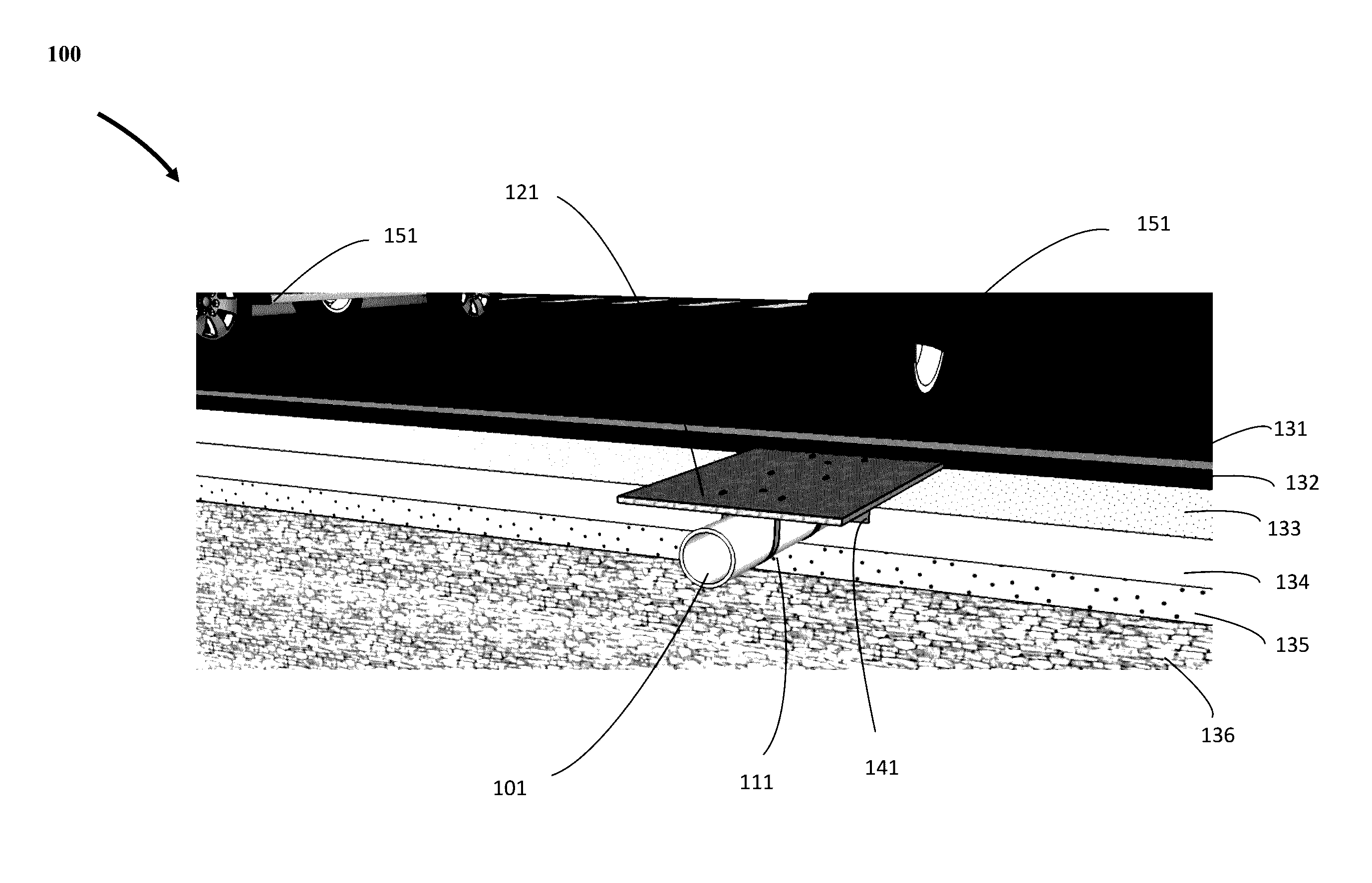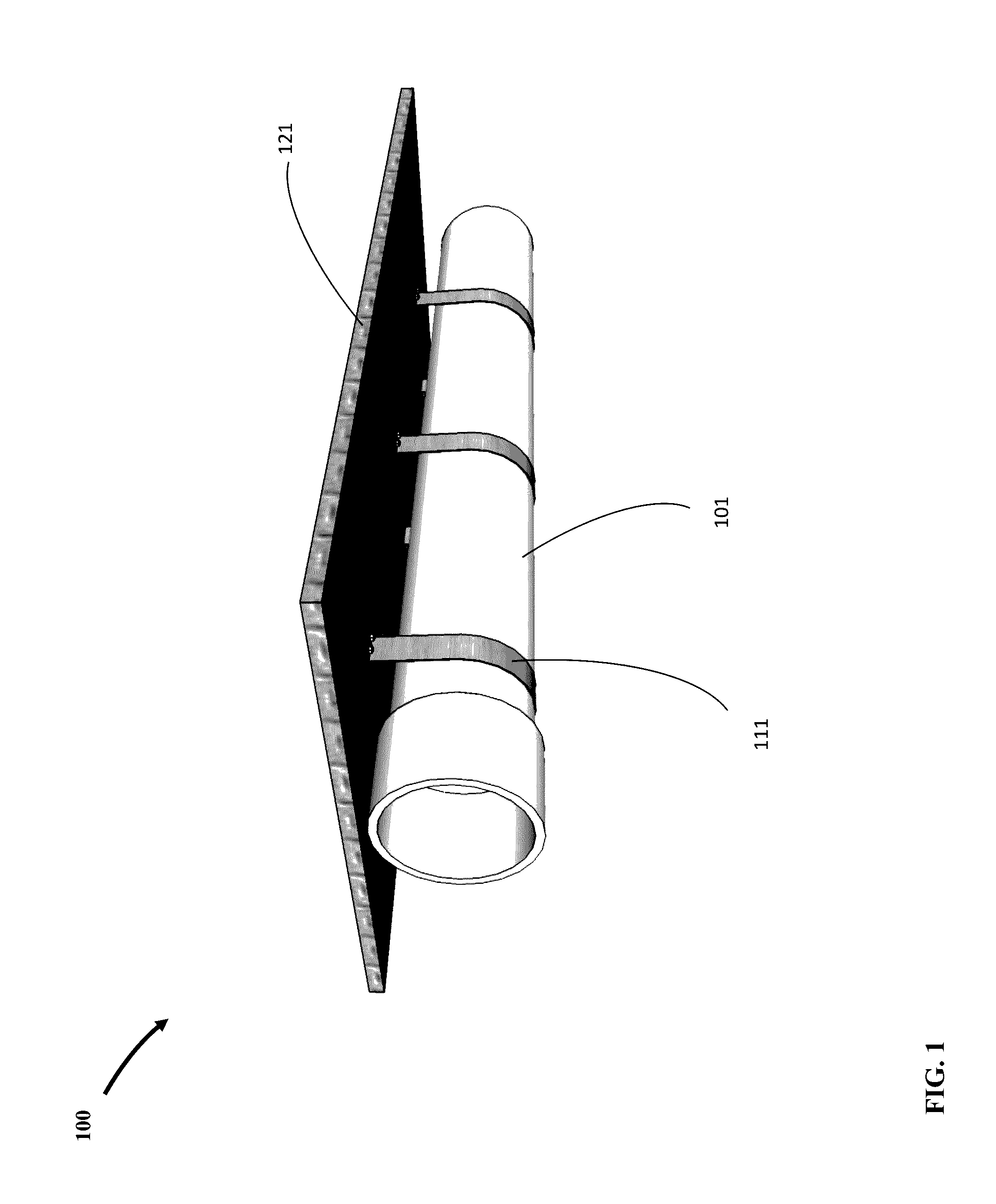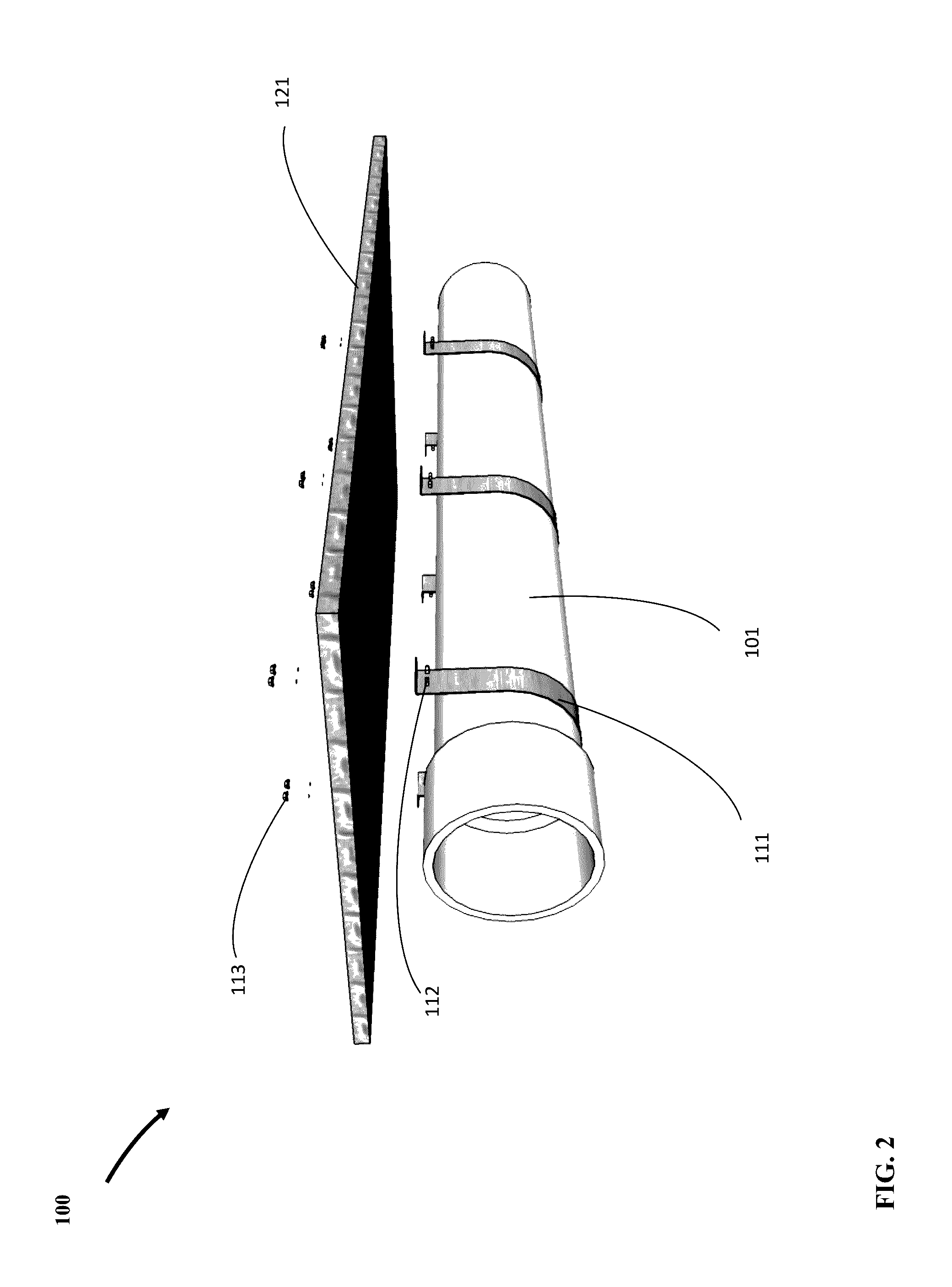Apparatus and Method for Installing Utility Service Lines in Road Pavements
a technology for installing utility service lines and trenches, which is applied in the direction of cables, cable installation in underground tubes, apparatus for laying cables, etc., can solve the problems of gross underutilization of resources, difficult to achieve new alignments and construction of new utility service lines in urban areas, and utility lines permitted within. , to achieve the effect of increasing the utilization of roads and ensuring the stability and longevity of trenches
- Summary
- Abstract
- Description
- Claims
- Application Information
AI Technical Summary
Benefits of technology
Problems solved by technology
Method used
Image
Examples
Embodiment Construction
[0024]Referring to FIG. 1 there is shown an underside view of a single unit of the present invention 100 showing pipe segment 101 attached to the underside of steel plate 121 by means of straps 111 of required width, strength, and durability. Steel plate 121 is of the type suitable for covering over utility trenches in road ways and is specified and dimensioned accordingly. Pipe 101 may be made of plastic, steel, or other materials and may be purposed for conveyance of pressurized fluids and gasses, or for use as conduit for tubes and cables. Straps 111 function to support the weight of pipe 101 and transfer it to the steel plate 121, and may take different shapes and forms, made from metal in the form of a “U” clamp as shown in FIG. 2, in which case they may be fastened to the steel plate 121 with bolts 113 and nuts 112 or flexible high tensile strength plastic straps used in the art to secure loads on transportation trucks.
[0025]FIG. 3 is a top view of a single unit of the present...
PUM
 Login to View More
Login to View More Abstract
Description
Claims
Application Information
 Login to View More
Login to View More - R&D
- Intellectual Property
- Life Sciences
- Materials
- Tech Scout
- Unparalleled Data Quality
- Higher Quality Content
- 60% Fewer Hallucinations
Browse by: Latest US Patents, China's latest patents, Technical Efficacy Thesaurus, Application Domain, Technology Topic, Popular Technical Reports.
© 2025 PatSnap. All rights reserved.Legal|Privacy policy|Modern Slavery Act Transparency Statement|Sitemap|About US| Contact US: help@patsnap.com



